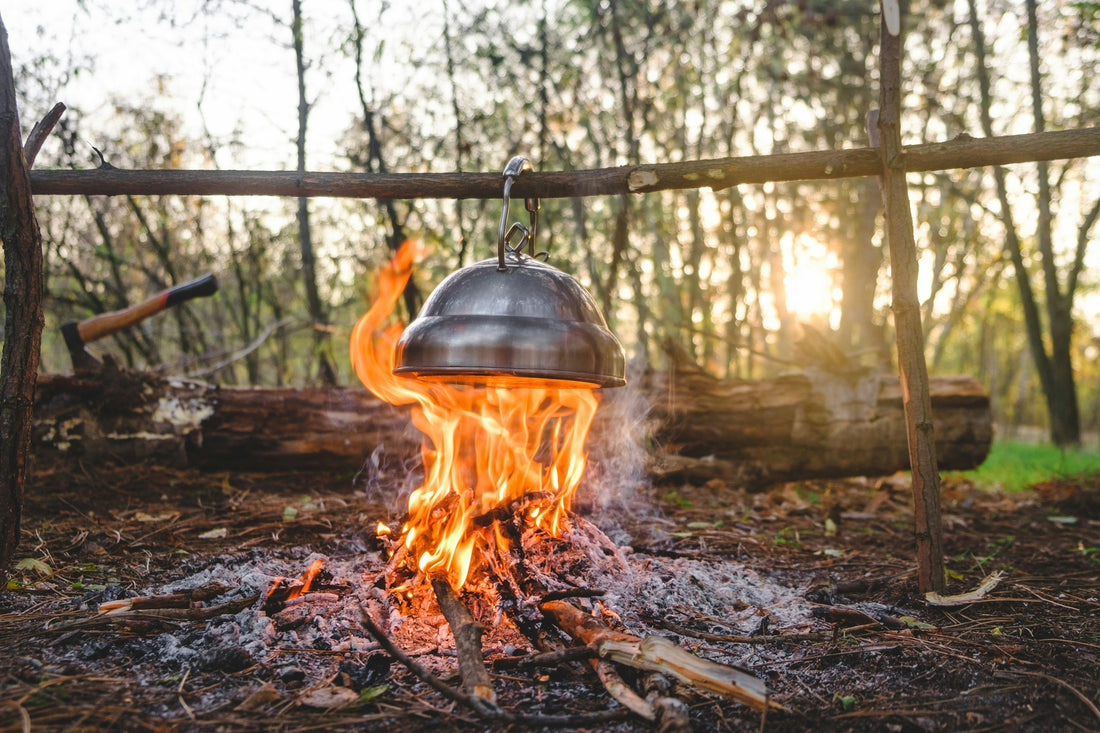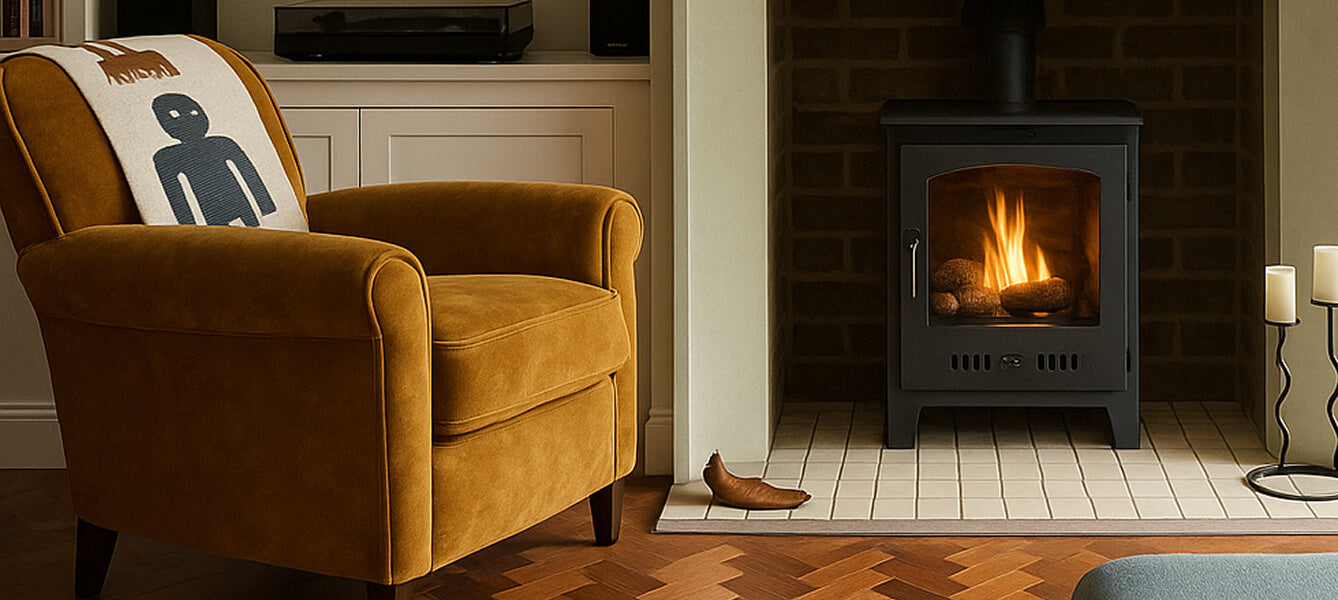
Outdoor Fireplace Safety: Top Tips to Enjoy Your Fireplace Responsibly
Do you like the idea of sitting around a fire on a summer’s evening and watching the flames flickering? If so, you also need to make sure you take fire safety very seriously.
Using your outdoor fireplace correctly should in theory imply it is safe. Having said that, fire always has a tremendous amount of risk to be dangerous when not controlled or respected.
A few simple steps can prevent potential problems from arising. Read on for our outdoor fireplace safety tips to guarantee maximum safety for you and everyone else enjoying a lovely outdoor fire.
Do Safety Tips and Guidelines Apply to All Types of Fireplaces?
First of all, we should mention and clarify that the tips below will not apply to all fireplaces, and it depends on the type of outdoor fireplace that you have.
For example, fire pit safety rules are slightly different to those for gas fireplaces. However, some tips do apply to all fireplaces.
If you have a bioethanol fireplace, you’ll already know that these are incredibly safe to use, and there’s no need to worry about sparks and smoke. That being said, it’s still a fireplace that has a live flame, thus you’ll still need to follow certain safety guidelines.
With that in mind, let’s take a look at the following safety tips.
1. Choose a Sensible Position

The position of your fireplace is the first thing to consider, and this will depend on the type of fireplace you have.
Let’s take a wood-burning fire pit as an example: you’ll want to keep this fireplace away from wooden decking. Some fire pits are designed to be used on decks, but many are not. Instead, it should be on the lawn or a stone patio, where it will be much safer.
Keep it a few metres away from structures like wooden walls, the garden shed, dry plants or anything flammable.
If you have a gas or bioethanol fireplace, you’ll have more freedom. Bioethanol fireplaces are perfect for patios because the flame is kept within its structure so there is no risk of sparks shooting out.
Still, it’s a good idea to make sure there is nothing flammable too near the fireplace before you light it.
2. Check Your Fireplace Thoroughly
Before you use your fireplace, give it a thorough inspection to make sure everything is in good working order.
For a fire pit, look for any areas of rust or damage before using it. For a gas outdoor fireplace, safety checks could involve inspecting the burners to make sure they are not clogged up, checking for debris and ensuring there are no gas leaks.
Bioethanol fireplaces don’t require too many checks, but just make sure yours is clean and dry and that there is no damage such as cracks in the fuel box before you use it. Especially if you haven't used it for a while, or it’s been left outside during poor weather as it should always be kept under a weatherproof covering in these circumstances.
3. Prepare for Emergency Situations

Whenever fire is involved, you need to be prepared for emergencies. Make sure you have everything in place before you light your fire, just in case.
Having a fire blanket and fire extinguisher on hand is sensible. If you don’t have these, then keep a bucket of water handy. You should also keep a first-aid kit nearby and have access to cold water for burns.
For gas fires, you may want a dry-chemical fire extinguisher. Just make sure you know how to use it before you actually need to put it to use during an emergency situation.
4. Take the Wind Direction into Consideration
The wind is one of the biggest risk factors for outdoor fires.
Check the weather before you light the fire. Which way is the wind blowing? This will help you to decide where to position the fire so you can prevent smoke from blowing into people’s faces. Breathing in smoke is not only unpleasant but it’s also very harmful.
In addition to this, strong winds can cause sparks to fly out of the fire. If it’s going to be really windy, you may decide against lighting it in the first place.
5. Choose the Right Type of Fuel

The type of fuel you choose is always important when it comes to fireplace safety. For log fires, choose dry hardwood like oak or maple if possible, which is denser and releases heat over time.
Softwood burns quickly and creates more flames, and moisture pockets can also pop, causing sparks. Never be tempted to use petrol to light the fire because this can be incredibly hazardous.
If you have a bioethanol fireplace, follow the manufacturer’s instructions when you choose the biofuel. They will usually recommend a certain type of fuel that you can trust to be used safely.
6. Keep a Safe Distance from the Fireplace
Whatever type of fireplace you have, make sure everyone keeps a sensible distance from it. This is especially important with a wood-burning fire where sparks can fly out. The wind can also whip smoke and ash in your direction.
Consider using a safety screen to prevent anyone from touching the fireplace accidentally and getting burnt.
With a bioethanol fireplace, you could potentially go closer to it because the flames are contained. Nevertheless, you should still always check the manufacturer’s guidelines. You want to feel the warmth of the flames without burning yourself.
7. Use Suitable Tools

If you are burning wooden logs on your fire, you’ll need to have a way to control them, and that means using suitable tools. A good poker and a pair of prongs will be essential for this purpose.
Your tools should be long enough to enable you to reach into the fire safely without burning your hands.
8. Never Leave Your Fire Unattended
One of the most important rules of all is to never leave your fire unattended. Wood-burning fires are particularly dangerous, so ensure someone is in charge of the fire at all times.
This is especially important if there are lots of people around. Make sure there is someone responsible in charge to watch for loose sparks and to prevent people from getting too close.
9. Use Your Fire Correctly

Whenever you’re having a fire outdoors, make sure you use the fireplace correctly. This will depend on the type of fireplace you have.
For example, with a gas fire or bioethanol fire, you won’t want to cook on it. Cooking marshmallows, for example, can lead to drips that clog the burner, unless you have a gas fire specifically designed for cooking on.
These fireplaces are mainly for sitting next to, enjoying the warmth and watching the wonderful flames.
A log fire, on the other hand, may be more suitable for cooking on. Just be careful about getting burnt. Additionally, keep the fire to a reasonable height, and don’t pile it up with logs because otherwise it can quickly get out of control.
10. Keep Children & Pets Away
If you have any kids or pets around, you’ll have to take even more care. Curious kids and overexcited dogs can pose additional risks.
Going back to the point about never leaving your fire unattended, this is especially true with kids around. Make sure there is always a responsible adult in charge.
Ideally, keep kids away from the fire, especially log-burning fires. Make sure they don’t pick up any burnt sticks or grab hot tools, because even minor burns can be very painful.
11. Put the Fire Out Safely

When you decide to call it a night, put out your fire first and don’t leave it burning. This is easy with gas and bioethanol fires, where you can simply turn them off and wait for them to cool down.
With a wood fire, it’s not always a great idea to tip water over it, especially if your fire pit is made from metal – this can lead to rust and damage.
It may have a cover or snuffer, and this is a simple way to kill the fire. Or cover it with dirt or sand to smother the flames. Make sure it is cool before you leave it alone.
After you have finished with it, perhaps the next morning when it has cooled down completely, clean the fireplace and store it away safely. Outdoor fireplaces often come with covers, so use one if possible to protect it from damage.
Safety First, Fun Second
Sitting around a fire is a wonderful way to spend time outdoors and enjoy the evenings and nights, especially in the summer. Just make sure you adhere to these outdoor fireplace safety tips and minimise the risks for everyone.
Fire may seem dangerous, but following these basic outdoor fireplace safety rules will drastically reduce the chances of something going off the rails.
Sticking to a short set of ground rules will allow you to enjoy your fireplace with friends and family without having to worry about catastrophic accidents.
